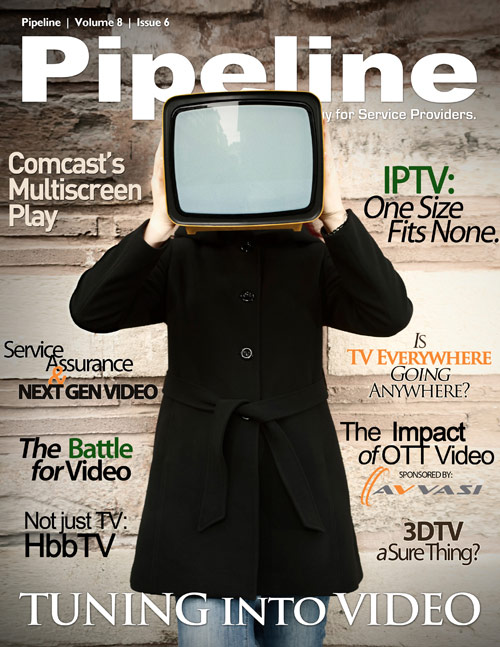Stefan pointed to standards as one way to cut down on associated costs. “For this reason, Alcatel-Lucent tries to drive the adoption of standards (HTML5, HTTP adaptive streaming), and tries to push for homogeneous content protection mechanisms.”
Next, I asked Stefan to explain about the underlying delivery technology required to replicate a live TV experience across multiple screens.
1. A video management system which provides the central logistics for multiscreen video publishing. It should provide video and metadata management, rights enforcement and business policy modeling between TV providers and content owners, and automated publishing capabilities. It should also provide flexible deployment options that support a fully-hosted cloud-based ASP (application service provider) model, a self-hosted solution within the TV service provider’s data centers, or a hybrid deployment that combines aspects of both. It should also come with advanced subscriber management services which maintain a detailed subscriber profile for each customer, supporting authentication, payments, preferences, audience measurement, advertising, and customer service needs.
2. A multiscreen Content Delivery Network (CDN) enabling service providers to build and operate their own dedicated CDN as an alternative to shared third-party CDNs. This improves video quality, offers faster file downloads at significantly reduced costs, and – when integrated with the abovementioned video management system -- assures seamless delivery of video.
The Future
With apps, connected TV integration, and an industry-first partnership with a popular game console, Comcast is prepared for the future. “We have the technology framework in place to deliver new features to Comcast customers faster than ever, including on connected TVs, tablets and multiple devices, which is core to our strategy and a key facet of the future of television,” said Brian L. Roberts, Comcast CEO.
Jim Benz, CSG International, feels that Comcast and other video operators can evolve even further. “Operators need to evolve out of the current mode of including TV Everywhere or subscription extension as an add-on feature of the bundle and deliver more paid content through that same multi-device delivery model,” opined Mr. Benz. “They need to offer premium or micro-subscriptions, pay-per-view on demand, and both rental and purchase options.”
There are challenges to this model, however, that require additional infrastructure to support.
“As soon as you start to sell content like that, you also have to care for it and cover all of the bases in terms of billing and payments,” explained Benz. “Those are things that carriers are pretty well equipped to deliver, but they also need capabilities that build on their existing OSS/BSS infrastructure that are specific to the digital video and digital content world. That brings us back to concepts like portable content in the cloud, what we refer to as a digital locker, which can have a post-paid billing aspect to it in regards to purchase, but also has real-time entitlement requirements on the delivery side.”
Regardless, by embracing multiscreen, Comcast is taking a proactive stance in the battle for video. The company is taking its content to the people, wherever and whenever they are viewing it. This is both a competitive advantage and something other video carriers can learn from.
Stefan De Beule sums up the importance of the multiscreen play for operators:
“When comparing telcos/cable operators with OTT players, telcos and cable operators have a major competitive advantage: their existing customer base. If they can satisfy the multiscreen requirements of their existing customers at the right price (by offering rich, high-quality content across various screens), these customers are typically not going to look for alternatives.”







